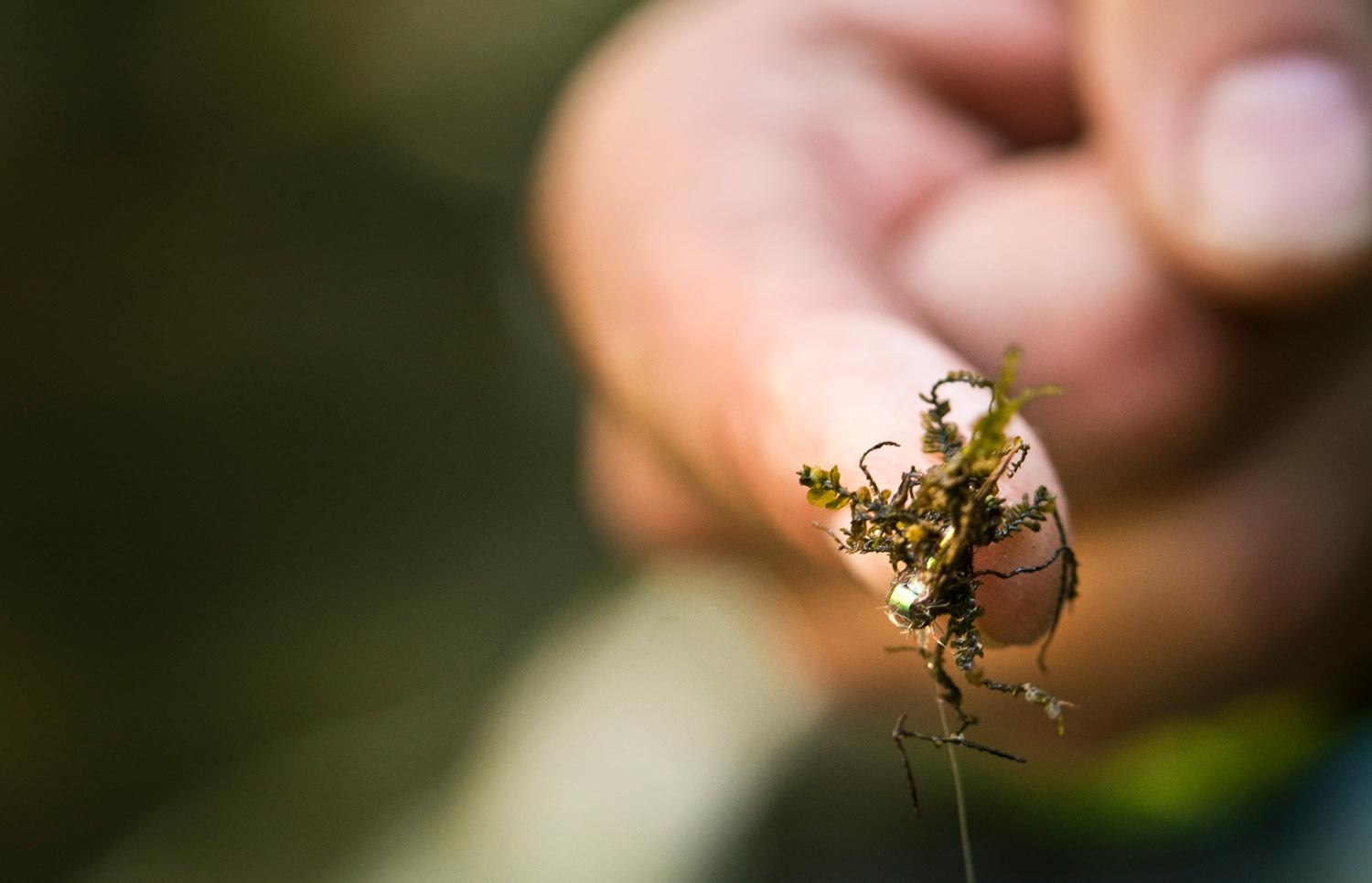The other day, guiding two anglers, I learned a valuable lesson of how important it can be to regularly check fly rigs throughout the day.
One of my clients had just landed a nice trout, so I told him to wade up and fish the next spot upstream, while I spent a few minutes instructing his buddy. About 15 minutes later, I returned to the client I had left, and asked if he’d gotten any action while I was gone. He responded, “No, but I made some really good presentations and drifts.” Surprised that the spot didn’t produce any trout (as it usually does), I requested him to bring in his rig for me to inspect his flies, and I immediately noticed the problem. There was a big glob of debris attached to his fly. It was evident that the nymph rig had snagged the bottom early on, grabbed some debris, and the trout had ignored the salad covered fly the remainder of his drifts.
It’s really easy for us to get lackadaisical on the water fly fishing, especially when we’re enjoying our time away from work and the beauty of the outdoors. Failing to take the time throughout the day to inspect and perform rig maintenance on the water, can have you in the penalty box without even knowing it. The two most common causes are rigs tangled (dry/dropper rig or tandem nymph rig) and flies that are carrying unwanted vegetation. Next time you’re on the water and you’re not getting bites when you think you should be, stop and check your rig for problems. It could very well, be the only reason why you’re not getting your rod bent. For all you guides, make a point to inform your novice clients of the importance of doing these maintenance checks before you leave their side. It’s a valuable lesson many beginners will overlook if you don’t point it out to them.
I know today’s tips is pretty simple, but I believe it’s worthy of noting since all of us have probably found ourselves in this situation a time or two. Much of the time, it’s the little things that go unnoticed, that keep us from catching fish on the water. Thanks for tuning into Gink & Gasoline and we wish all of you happy holidays.
Keep it Reel,
Come fish with us in the Bahamas!
Kent Klewein Gink & Gasoline www.ginkandgasoline.com hookups@ginkandgasoline.com Sign Up For Our Weekly Newsletter!

Great tip Kent. Not trying to hijack your post, but While we’re on the topic of checking your rig….. You gotta check your hooks and your tippet after each hang up as well. There have been plenty of times that I’ve gotten hung on rocks or wood and after inspecting my rig I’ve found either a bent hook point, or frayed tippet. If you get lazy and don’t catch these things before hooking into a nice fish it will ruin your day. I’ve been there and done that and it’s no fun my friend. Hope you and Louis have a great Christmas!
Great tip! Very true of euro nymphing were you are in contact with the bottom a majority of the time. Merry Christmas to you and your families and God bless!
This past fall I caught a stonefly with an egg. Yep, my flies were scratchin the bottom like I was intending them to and one of the times I inspected my flies, which is very often, I hooked a stonefly nymph. I thought, well this might be the one time a fish might think my think my fly was more appetizing than normally..it’s a stonefly hitching a ride on an egg! That was not the case though.
I totally agree kent. People take the condition of their leader/tippit/flies too lightly sometimes. Attention to detail will greatly benefit the angler.
You definitely have to get in the habit of regularly checking your set up. Sometimes when I haven’t had a hit in a while I’ll check it, only to find that there’s no fly on the end of my line at all!
We are all in the same boat on that one
Louis,
With a little advance attention, the check can be done without taking the flies out of the water. It is pretty easy to examine a clean or untangled set-up in the water on the first retrieve and use that visual “picture” to check your flies before every succeeding cast if you want to. Guides can usually tell if something’s wrong with a set-up from a distance. Well anglers can do the same with a little attention to detail. This does not resolve Justin’s bent, blunted, or missing hook point. If I am getting strikes and not hooking up, I closely check my hook. Like Justin, I also check if I think I hit a rock or other obstacle pretty hard.
I keep a hook sharpener on me and I use it!
Me too Spencer, salt and freshwater. Good reminder.
Pingback: December 27, 2013: TGIF Link Round-Up | Feather and Fin